Roof Framing By The Steel Square
Description
This section is from the book "Hicks' Builders' Guide", by I. P. Hicks. Also available from Amazon: Hicks' Builders' Guide.
Roof Framing By The Steel Square
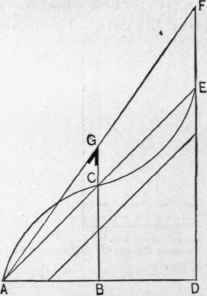
Fig. 98. - Finding Lengths of Jack Rafters.
The lengths and cuts of any rafter, hip, valley or jack on roofs of any pitch may be easily found by a proper application of the steel square and 2-foot rule. There are a few simple facts which, if remembered, will serve to make hip and valley roof framing so plain and easily understood that no one need have any difficulty in finding the length and cut of any rafter. The pitch of a roof is always designated by the number of inches it rises to the foot run, hence the cut of a common rafter is always 12 for the bottom cut and for the top cut is the rise of the roof to the foot. The cut of a corresponding hip or valley of equal pitch is always 17 for the bottom cut and for the top cut the rise of the common rafter to the foot. Thus if 12 and 8 cut the common rafter, 17 and 8 will cut the hip or valley. The top bevel of a jack rafter is always 12 on the tongue of a square and the length of the common rafter for a foot run on the blade. The blade gives the cut. In other words, the run of the common rafter on the tongue and the length on the blade will always give the top bevel of jack rafters on roofs of equal pitch. The plumb cut or down bevel of a jack is always the same as that of the common rafter.

Fig. 99. - Finding Length of a Common Rafter by means of the Steel Square.
Referring now to Fig. 99, to find the length of a common rafter, take the run on the blade of a square and the rise on the tongue, measure across, and we have the length. For example, if the run of a rafter is 12 feet and the rise 8 feet, take 12 inches on the blade and 8 inches on the tongue and measure across, which will give the length, 14 7-16 inches, equal to 14 feet 5½ inches, 12 and 8 giving the cuts. The blade gives the bottom cut and the tongue the top cut. To find the length of a corresponding hip or valley, take the run of the common rafter on both blade and tongue and measure across, which will give the run of hip or valley, which is 17 inches. To avoid confusion by cross lines, refer now to Fig. 100. Take 17 inches on the blade and the rise, 8 inches, on the tongue and measure across, which gives the length of hip or valley 18 13-16 inches, equal to 18 feet 9½ inches, 17 and 8 giving the cuts. The blade gives the bottom cut and the tongue the top cut To find the bevel across the top of jacks, take the length of common rafter, 14 7-16 inches, on the blade and the run, 12 inches, on the tongue, and the distance across also represents the length of hip or valley. This merely changes the position of hip or valley in order to obtain the bevel across the top of jacks, which is 12 on the tongue and 14 7-16 on the blade. The blade gives the cut. The plumb cut or down bevel is the same as that of the common rafter.
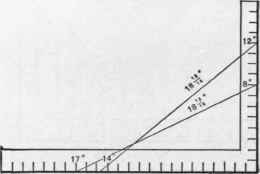
Fig. 100 - Finding Length of Hip or Valley Rafter.
The lengths of the jacks may be obtained in the following manner : Take the run of common rafter on the blade, 12 inches, and the length, 14 7-16 inches, on the tongue, and lay a straight edge across, as shown in Fig. 101. Space the jacks on the blade of the square, which represents the run of common rafter, and measure perpendicularly from the tongue to the straight edge on the line of each jack for their length.
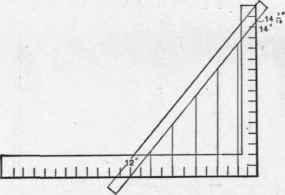
Fig. 101 - Obtaining the Lengths of Jack Rafters with the Steel Square.
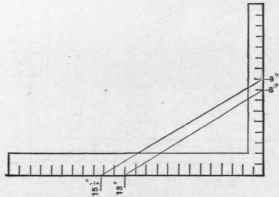
Fig. 102. - Finding Lengths and Bevels of Rafters on Roofs of Unequal Pitches.
The lengths of hips, valleys and jacks on roofs of unequal pitches may be found in the same manner by taking figures on the blade and tongue of a square which will represent the different pitches. For example, suppose a roof hips 9 feet on the right side of the hip and 13 feet on the left and has a rise of 8 feet, what will be the lengths and bevels of the rafters? Referring to Fig. 102, take 13 inches on the blade of a square and 8 inches on the tongue and measure across. This gives 15½ inches, equal to 15 feet 3 inches, which is the length of the common rafter on the left side of hip. Now, 13 inches on the blade and 8 inches on the tongue give the cuts, the tongue giving the top cut and the blade the bottom cut fitting the plate. Now take the length of common rafter on the left side, 15½ inches, on the blade, and the run of the common rafter on the right side of hip, 9 inches, on the tongue and the blade will give the cut across the back of the jack rafters on the left side of the hip. The lengths of the jacks may be found in the following manner : Divide the length of common rafter by the number of spaces for jacks. This will give the length of the shortest jack and the second will be twice that length, the third three times, and so on till the required number are found. Each side of the hip may be worked in the same manner till all the different lengths and cuts are found. The whole thing boiled down results in a few simple facts : 1, that the run of the common rafter on the tongue of a square and the length of the common rafter on the blade will always give the bevel across the back of a jack rafter on roofs of equal pitch; 2, if the roofs are of different pitches the length of the common rafter on the blade and the run of the common rafter on the opposite side of the hip or valley on the tongue will give the cut of the jack on the side of the roof from which the length of the common rafter was taken. The blade gives the cut. Hence the bevels of jack rafters on roofs of different pitches may be found as easily as on roofs of equal pitch.
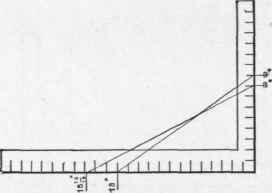
Fig. 103. - Obtain.ng Length and Cuts of Hip Rafter by means of Steel Square and Two-Foot Rule.
The next step will be to show a simple plan for obtaining the length and cuts of the hip rafter by means of the square and 2-foot rule. As the run of common rafter on the left side of hip is 13 inches and on the right side 9 inches, we will take figures on the blade and tongue of a square which will represent the runs of the common rafters. Refering to Fig. 103, take 13 inches on the blade and 9 inches on the tongue and measure across and we have 15 10-12 inches, equal to 15 feet 10 inches, the run of the hip rafter. Now take the run of the hip, 15 10-12 inches, on the blade and the rise of the roof, 8 inches, on the tongue, and measure across and we have the length of the hip rafter, 17½ inches, equal to 17 feet 9 inches. Now, 8 inches on the tongue and 15 10-12 on the blade will give the cuts. The tongue gives the down bevel at the top and the blade the bottom cut fitting the plate.
Continue to:


